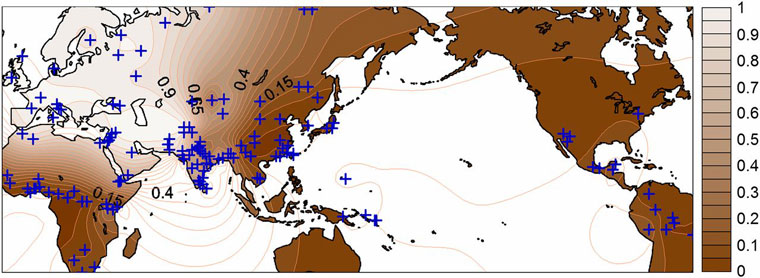The building immunity to pathogens is rather a quick process based on natural selection. It goes quickly through the populations like wildfire. We are talking about few years, maybe couple of decades) after time frame, like black death in Europe, or WWI spanish flu. In most cases population rebuilds numbers in few generations. In case of America by 1600 hundreds life was back to normal, well except colonialists being there. Now it's been 500 years since first contact, and immunity seems to be the same across the board.
When we extrapolate it on Europe, farmers meeting hunters, the dying off event could have happened at first encroachment of farmers 8,000 BC and was done couple of hundreds years later. We won't find it later at 6,000 BC the time if Stuttgart or Brania. Most likely it didn't happen at all or much sooner, because of constant contact of both sides through dry Bosphorus bridge.
I can see how it could have happened much sooner. There wasn't an iron curtain at the Bosphorus, and all that is needed for communicable disease to spread is the exchange of one food stuff or trade good. I'll have to look at the results for Loschbour when I get a chance, and see if they tested for this; I know they did for Mal'ta, but I have to look up the results for that too as my memory seems to be letting me down today.
When looking at the autosomal break downs for Amerindians, it's always struck me how even relatively isolated, previously high density areas that show typical Amerindian mtDNA and yDNA have a small amount of admixture. Perhaps it was that admixture that allowed them to survive the ravages of the diseases that the Europeans brought with them.
I do think the genes for blue eyes and dark skin pigmentation are interesting. It should be kept in mind as Aberdeen has noted that the probability score for blue eyes is about 50/50, although it rises for fair eyes, including hazel.
As far as the skin pigmentation genes are concerned, what is really striking is not so much that the individual lacked the two snps that so heavily account for European type pigmentation ( SLC 24A5 and 45A2 ), as Loschbour lacked them too, and Mal'ta. It's that even at this late date he lacks the KITLG gene.
KITLG and AGIP are skin lightening mutations that occurred in Eurasia before the split between West Eurasians and East Eurasians ever happened. He has the AGIP gene, but lacks the KITLG gene, which on its own accounts for up to 20% of the variation between West Africans and Europeans.
I thought all non West African populations had the KITLG gene. Are there any modern populations today that have the AGIP gene but not KITLG? I think the Amerindians have both. I'm not sure about the islanders of Indonesia.
I also think that the artist's reconstruction that has been put out is a little off, and not only in the matter of the skin tone presented. The skull, from my admittedly limited knowledge, has a rather archaic look. How likely is it that it would be paired with such a modern European face? For one thing, the forehead area would seem to me to be much narrower than in the reconstruction, and the cheek bones much higher. I'm reminded of the first reconstruction of Oetzi before the much more extended imaging and testing, and how wrong it was. I just think there is a tendency at first to make these ancient people look more like us, or like some group to which we think they belong.


